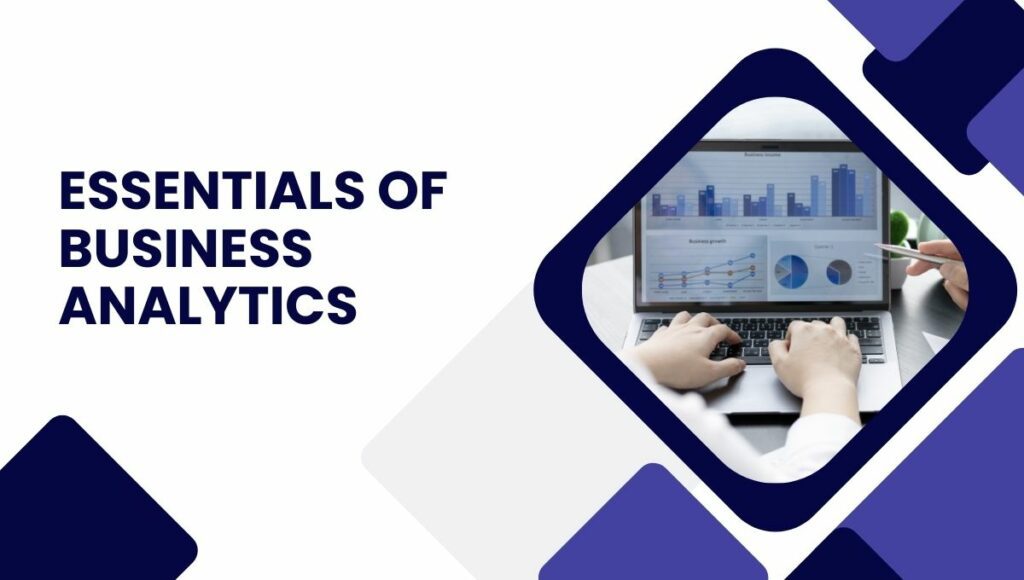Business analytics is the factor giving businesses a competitive edge in the very data-driven world we live today. While everything is driven by data and metrics, the "why" behind the outcome is equally important as the outcome itself. Which is helpful through causal inference; an important piece of the business analytics puzzle that makes decisions more intelligently based on patterns rather than mere positive correlations found in the data.
This guide will be teaching you the basics about business analytics, more particularly on causality and causal inference and analysis. Do know the techniques in analyzing causality tools, and methods, and learn how statistical and predictive analytics work. If you're starting out or considering taking up a course in business analytics to upskill, then this is the guide for you.
What is Business Analytics?
Business analytics defines the use of data when making decisions. This is more than statistics applied to business, but actually gives an organization an understanding of past performance trends and enables it to predict future trends, thus making them better in decision-making, going beyond standard data analysis.
Why Causal Inference Matters in Business Analytics?
One of the greatest strengths of business analytics lies in its ability to take it further than mere correlation and establish causation. Techniques of causal inference would essentially find out if there is a causal relationship between two or more variables. For example, did an increase in sales result from an increase in spending on social media or by coincidence? It helps businesses know which strategies really work, therefore helping them allocate their resources effectively.
Key Techniques in Business Analytics for Causal Inference
- Randomised Controlled Trials: Essentially the "gold standard" of causal inference, RCTs involve a random assignment of subjects to the treatment or control group, thereby conferring an ability to tease out the effect of any particular variable.
- Difference-in-Differences DiD: It is the method of causal inference that compares a certain change over time for an exposed group and a non-exposed group. It allows businesses to measure the effect of interventions. Instrumental Variables: An instrumental variable is exogenous to treatment and not to the outcome while affecting treatment. It helps reduce bias where randomised methods aren't possible.
- Propensity Score Matching: PSM pairs subjects by their characteristics, thus simulating experimental conditions to estimate causal effects more realistically.
- Regression Discontinuity: They apply if the treatment assignment has a clear cutoff point, such as some score threshold in a test; comparison of people on each side of this threshold can help establish causation.
This is important because, to entities wanting to get real actionable insights, it is crucial to know and apply such causal inference techniques.
Essential Business Analytics Tools for Causal Analysis
Numerous tools in business analytics can support causal inference and analysis. The tools are not only used to comfortably process and interpret the data but also add efficiency to complex statistical analysis in business.
Some of the commonly used tools include:
- R and Python: These programming languages are widely used in business analytics due to the use of their powerful libraries, which allow deep statistical analysis and data manipulation.
There exist two broad categories into which tools need to be divided: Stata and SAS This category is especially dominant in fields that necessitate careful econometric analysis, often using techniques of causal inference, as well as regression analysis.
This category is also needless for visually stating the results of the causal analyses in a communicable form. Tableau and Power BI.
- Google Analytics: A tool that each business around the world uses to track customer behaviour on websites and provides an invaluable analysis of trends and causal patterns.
SPSS and Minitab: These are more for users requiring robust statistical tools for deeper, more detailed business analytics.
Mastering these business analytics tools greatly improves your power to analyse and interpret data when causality is an element.
Statistical Analysis in Business: Foundation of Causal Inference
The concept of statistical analysis in business is the most important aspect in understanding the techniques used for causal inference. This concept involves analysis of Large data sets in order to observe differences, similarities and patterns among them.
Such a foundation is important for the following two reasons:
- Validity: Statistical analysis enhances the level of order and enables substantiate the results, hence it makes sure that the effect that has been recorded is not through random processes.
- Evidence Based Management: On the other hand application of techniques such as regression, t tests, and hypothesis testing enable formulation of objective conclusions in businesses.
Statistical analysis in business is very crucial whether you are calculating customer lifetime value, measuring the success of a product, or forecasting churn. It enables the business to make logical deductions and use causal inference more effectively leading to better decision-making.
Predictive Analytics Methods: Enhancing the Power of Business Analytics
Where causal inference looks ahead to the "why" of past outcomes, predictive analytics methods look forward by making predictions of future trends and events. Where the combinations of causal inference with predictive analytics allow businesses not only to understand the reasons for past outcomes but also predict their future needs, it becomes important to know which ones are popular in use.
Popular predictive analytics methods include:
This requires applying machine learning algorithms such as decision trees, random forests, or even neural networks, that can scan large amounts of data and relate more complex variables.
Time Series Analysis predicts future value based on history and this often proves very helpful in predicting sales or demand.
-Regression Analysis: It is the most commonly used regression with the help of business analytics, where one or more independent variables predict the value of a dependent variable.
-Cluster Analysis: It is an unsupervised learning technique that can classify data into different segments. Now, it helps in targeted marketing, personalized recommendations, and much more.
-Text Mining: As the use of social media is increasing, and reviews flood cyberspace, it really is important to draw insights from this unstructured data by using text mining.
These forms of predictive analytics will enable a firm to take a proactive approach to its understanding so that it will be able to predict the challenges. They can also capitalize upon emerging trends using these causal inference techniques.
Choosing a Business Analytics Course to Master Causal Inference
If one aims to upscale his or her career, it is worth signing up for a business analytics course that includes causal inference. A good-paced course will explore in depth the statistical and predictive analytics that are highlighted in this article, as well as practical sessions on top business analytics tools available in the market today. With the increasing demand for qualified analysts, a specific program can be an advantage and lead to more interesting career goals.
Conclusion
Business analytics captures causal inference, which would enable the organisation to make much better decisions based on causality rather than mere correlation. With mastery over the quintessential business analytics tools, knowledge of statistical analysis in business, and the best predictive analytics techniques, companies could be armed with deep insights from data. For those ready to dive deep, a comprehensive business analytics course can pave the way to career development and innovation in this exciting area of endeavour.
FAQs
- What is causal inference, and why is it important in business analytics?
Causal inference, as the term suggests, is the process that tries to assess the cause-effect relationship between two or more variables. It is essential because it helps companies defend the results which in the end assists them in making the right decisions.
- What tools are commonly used in causal inference and business analytics?
Often used are R, Python, SAS and Stata for statistical and machine learning purposes; Tableau and Power BI for visualization; in addition to Google Analytics for customer analysis.
- Why is statistical analysis in business-critical for causal inference?
Statistical analysis validates findings by adding rigour to causal relationships, ensuring that observed patterns are not coincidental but genuinely representative of causality.









